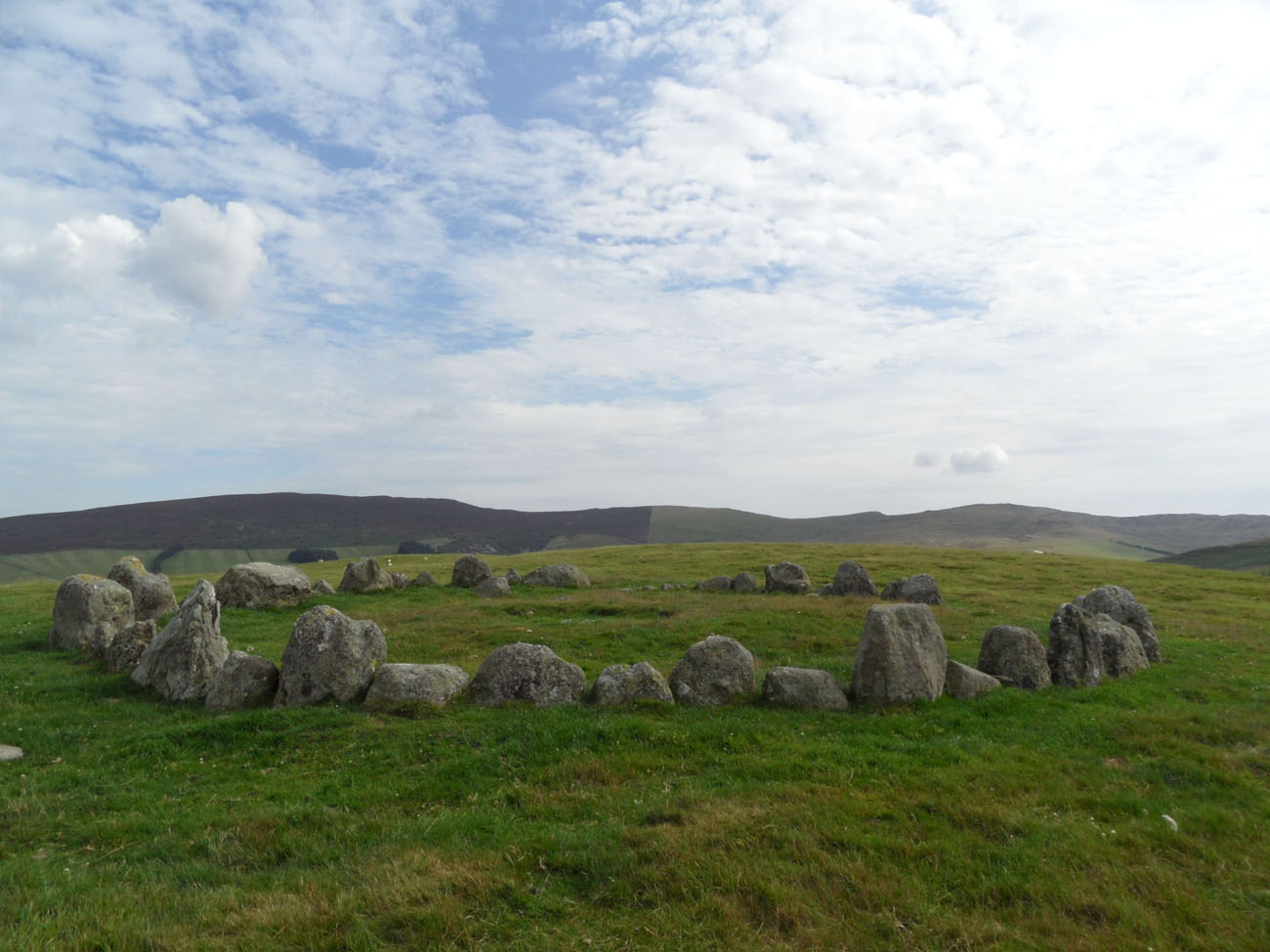History
Cromlech Moel Ty Uchaf was probably built in the Bronze Age in Britain, 2500-1500 BC. It was part of a megalithic building tradition that spread across Britain and Ireland, resulting in at least 900 stone circles being built on both islands. It may have had ritual or funerary significance, or a combination of both. Unlike other similar structures, it did not serve as a place for tribal meetings of local communities, because a burial was most likely placed in the center of the stone circle. It is not known how long the building functioned.
Architecture
The stone circle was erected on the southern part of the summit of Tyn y Foel Hill, overlooking the vast valley of the River Dee to the west. It was founded on a hilly area bordered by slopes, especially steep from the south, and also from the east and west at a slightly greater distance. Only from the north, a long and relatively narrow neck connected the area where the cromlech was built with the rest of the hill.
The Kromlech was made of at least 41 stones, placed on the edge of a circle with a diameter of almost 11.9 meters. Relatively low stones were selected, not protruding much above the ground level. Most were 0.4 meters high, the highest 0.7 meters. Characteristically, it were placed close to each other, so that most of them touched each other. Moreover, they were placed alternately, in a repeating arrangement, where single larger stones were separated by one or two smaller stones. In the south-east and east of the circle there may have been entrances created by an approximately 3-meter-wide gaps in the circumference of the stones, but the intentional removal of some boulders in later centuries cannot be ruled out.
In the center of the circle there may have been a small ossuary (cist) up to 5 meters in diameter. Due to the unusual, very tight arrangement of stones and the remains of a cist in the middle, the cromlech resembled some highland burial sites with mounds (cairns) surrounded by a wreath of stones (kerb). It may have been an intermediate building between the above two types of structures, or if the cairn above the central ossuary was originally much larger and filled the entire space between the stones, Moel Ty Uchaf originally was not a cromlech at all.
Current state
Moel Ty Uchaf is one of the best-preserved cromlechs in northern part of the Wales, despite two gaps in the stone perimeter, visible on the south-east and east sides. All that remains of the supposed ossuary in the center of the circle is a 0.3-meter-high knoll. On the southern side of the cromlech, at the bottom of the slope, you can see the remains of a Bronze Age burial mound with a diameter of about 16 meters. Currently, it is almost completely covered with peat.
bibliography:
Castleden R., Neolithic Britain: New Stone Age sites of England, Scotland and Wales, London 1992.
The Royal Commission on The Ancient and Historical Monuments and Constructions in Wales and Monmouthshire. An Inventory of the Ancient Monuments in Wales and Monmouthshire. County of Merioneth, London 1921.

